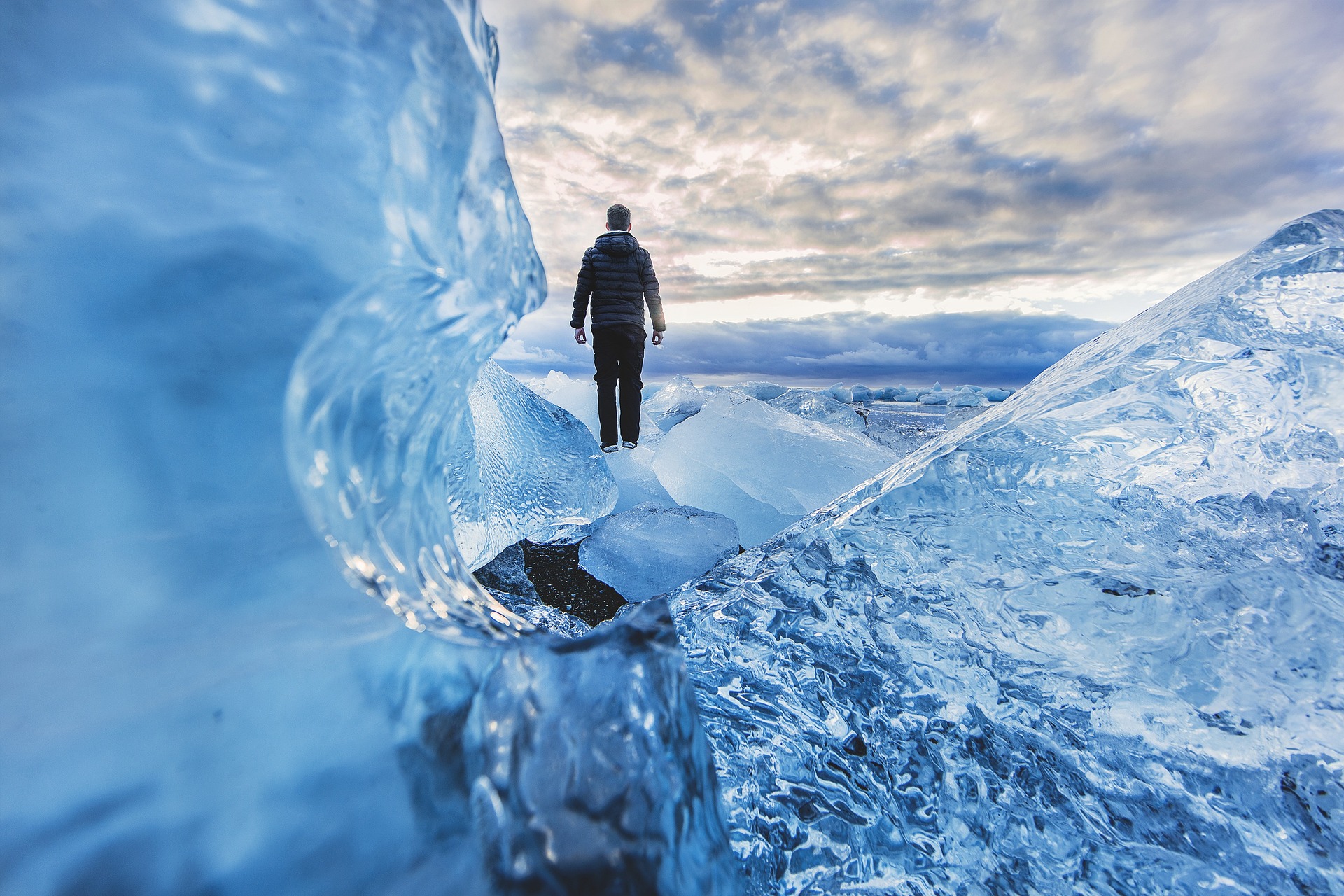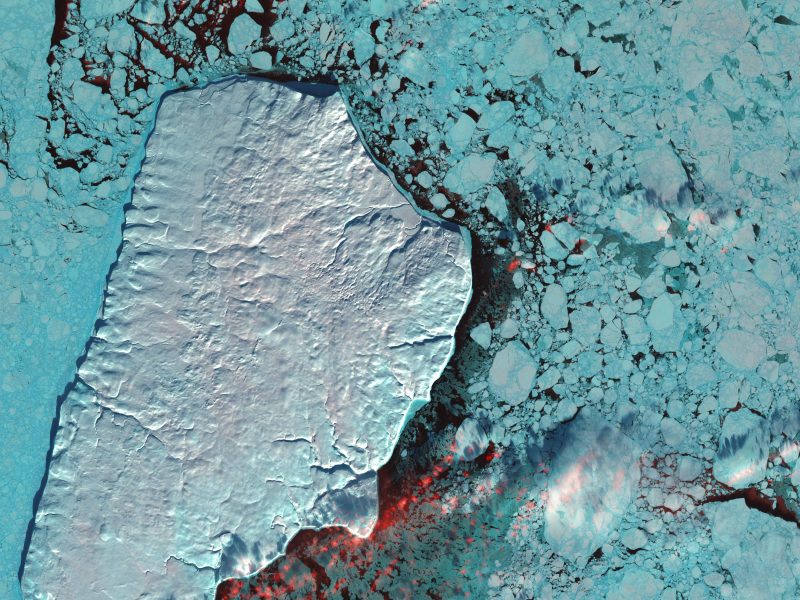In a period of global warming, it is hard to imagine a new glaciation period, even in the long run.
Climate change is the most important global issue on Earth. Compared to the end of the 19th century, the global surface temperature for the end of the 21st century is very likely to rise by 1.0 to 1.8 degrees Celsius (◦C) under the “very low greenhouse gas emissions scenario”, by 2.1 to 3.5 ◦C for the “intermediate scenario”, and by 3.3 to 5.7 ◦C under the worst-case scenario, “very high greenhouse gas emissions scenario” (Intergovernmental Panel on Climate Change, 2021). The latter scenario implies dramatic consequences on nature and wildlife in terrestrial, wetland, and ocean ecosystems, and on humanity with respect to food and water security, migration, health, higher risk of conflict worldwide, reduction of global economic product, and a possible collapse of the current societal organization. Climate change is partly due to orbital variables, and partly the influence of humanity during the most recent 10,000 to 15,000 years (i.e., Anthropocene). First, during the last 800 years, climate change was partly driven by orbital variables, which influenced global ice volume, atmospheric carbon dioxide (CO2) level, and land surface temperature. The atmospheric CO2 level and land surface temperature are related to melting glaciers and sea-ice volume reductions.
Climate-econometric modeling
Figure 1 represents the main orbital variables that drive Earth’s climate: (i) changes in the non-circularity of Earth’s orbit with a period of 100,000 years, (ii) changes in the tilt of Earth’s rotational axis relative to the ecliptic with a period of 41,000 years, and (iii) circular rotation of the rotational axis itself, which changes the season at which Earth’s orbit is nearest to the Sun, with a period that is between 19,000 to 23,000 years. The cycles of those variables (i.e., the Milankovitch cycles) are the most important orbital variables that influenced Earth’s climate cycles during the last 800 years, and we use them as control variables in our climate-econometric models. The influence of humanity on Earth’s climate started approximately 10,000 to 15,000 years ago by commencing agricultural activities such as cultivating plants and livestock (Ruddiman, 2005). That influence significantly increased after the Industrial Revolution (from 1769 to 1840, approximately), and it has further increased with an accelerating growth rate since then. Earth’s population rose from 1 billion in 1800 to 8 billion in 2022, associated with a significant global-scale economic expansion. One of the consequences is increasing global greenhouse gas emissions (GHGs). In the recent work of Blazsek and Escribano (2022), the score-driven ice-age model was introduced, and they show that the statistical performance of the score-driven ice-age model is superior to the statistical performance of the ice-age model of Castle and Hendry (2020). However, Blazsek and Escribano (2022) also show that the forecasting performances of both models are similar and not very effective for the climate variables for the Anthropocene. For the last 10-15 thousand years of the forecasting window, the observed values of global ice volume are unexpectedly low, and the observed levels of CO2 and Antarctic land surface temperature are unexpectedly high. Motivated by those issues, the present paper introduces a new score-driven threshold ice-age model improving the forecasting performance of the last 10-15 thousand years by controlling for the humanity impact on climate change (anthropogenic climate change effect).
Figure 1: Description of the three orbital variables that influence the climate on earth
The dependent variables of this study are in Figure 2: global ice volume Ice, atmospheric CO2, and Antarctic land surface temperature. Blazsek and Escribano (2022) and Castle and Hendry (2020) provide details about the data they have used for the last 800 thousand years.

Figure 2: Evolution during the last 800 thousand years of Ice-volume, CO2, and Temperature, that jointly model to measure the climate change impact of human activity (Anthropocene). Notice the long cycles observed in the three series and the expected new glaciation cycle during the next 100,000 years.
Long-run forecasts, after controlling for the impact of human activity on climate change
The multi-step ahead out-of-sample forecasts of Ice, CO2, and Temp of the ice-age models of Blazsek and Escribano (2022), see also https://uc3nomics.uc3m.es/category/climate-change/, are included in the top three graphs of Figure 3. It includes the observed values of Ice, CO2, and Temp, the forecasts of these variables, and their one standard deviation estimates. For the last 10-15 thousand years (Anthropocene), the observed values of global ice volume are below the forecast interval, indicating unexpectedly low levels of global ice volume. The observed levels of CO2 and Antarctic land surface temperature are above the forecast interval, indicating unexpectedly high levels of CO2, and Antarctic land surface temperature. To control for the time-varying parameters observed in climate models, Blazsek and Escribano (2023) introduce the class of score-driven threshold ice-age models. The idea was to allow the parameters of the models to change for extreme values of the three climate variables (high values of CO2, temperature, etc.). Based on cluster analysis and by a Markov-switching approach, we create state-dependent models that identify parameter regimes (switching regime) of each of the equations of the system. We estimate those models using 700,000 years and forecast the next 100,000 years. The forecasting results are included in the bottom three graphs of Figure 3. We can see that all the values of the last 10-15 thousand years are within the 95% confidence intervals. Therefore, these new ice-age models are the ones used to make reliable long-run climate forecasts for the next 5.000 years.

Figure 3. Multi-step ahead out-of-sample forecast of the last 100 thousand years for Ice volume, CO2, and Temperature, with their confidence intervals. In the top three graphs, notice that during the Anthropocene, the climate variables are outside their confidence intervals (ice-volume lower than expected, and Temperature and CO2 higher than expected). The bottom three graphs show how our new score-driven threshold models control for the anthropogenic effects on the three variables providing reliable forecast.
Long-run climate Forecast for the next 5,000 years
In Figure 4.a, we include the forecasts where the ice-volume will steadily increase during the next 5,000 years, starting during the next 1,000 years. However, in Figure 4.b and Figure 4.c, we forecast steady reductions in CO2 and temperature after controlling for the anthropogenic effects of climate change.

Figure 4. Multi-step ahead out-of-sample forecast of the next 5 thousand years for a) Ice volume, b) CO2, and c) Temperature, with their confidence intervals. Those forecasts are based on our score-driven threshold models, after control for the anthropogenic effects during the last 10 thousand years.
These results are consistent with the predictions of Castle and Hendry (2020) and Petris and Kaufman (2020) for a longer long-run horizon, identifying that the future turning point will be in 20,000 years (the next glacial maximum). However, to avoid the anthropogenic effect on those variables, they started the forecasting exercise 15,000 years ago instead of what we have done in Blazsek and Esxcribano (2023), which is controlling for those effects in the estimation of the parameters of the ice-age model.
Main conclusions
Climate variables are known to be subject to abrupt changes when some threshold levels are surpassed. We use paleoclimate data for the last 798,000 years on global Ice volume (Ice), atmospheric carbon dioxide level (CO2), and Antarctic land surface temperature (Temp) to model and measure those long-run nonlinear climate effects. The climate variables have very long and asymmetric cycles, created by periods of upward trends, followed by periods of downward trends driven by orbital variables. We show that our new score-driven threshold ice-age models improve the statistical inference and forecasting performance of competing ice-age models, and we can control for the anthropogenic effect.
The drawback of using paleoclimate data, of 1,000-year frequency observations, is that we cannot measure the nonlinear climate effects of humanity created during the last 250 years, which are known to have generated abrupt structural changes in the Earth’s climate, due to unprecedented high levels of CO2 and Temperature, and low levels of Ice. On the other hand, the advantage of using low-frequency data is that they allow us to evaluate the long-run effects of what would have occurred if humanity had not burned fossil fuels since the start of the Industrial Revolution. These long-run forecasts can serve as benchmarks for the long-run evaluation of the impact of humanity on climate variables.
Are we, therefore, entering a new glaciation period in the long run? The answer is yes. Within the next 1,000 years, we will be entering a new period that will reach the glacial maximum in 20,000 years. These natural long-run cycles on the climate (cyclical trends) are created by the cycles generated in orbital variables.
Further Reading:
Blazsek S. and A. Escribano (2022). “Robust estimation and forecasting of climate change using score-driven ice-age models”. Econometrics 10: 9, pages 1-29. https://doi.org/10.3390/econometrics10010009
Blazsek S. and A. Escribano (2023). “Score-Driven Threshold Ice-Age Models: Benchmark Models for Long-Run Climate Forecasts”. Energy Economics,(2023). https://doi.org/10.1016/j.eneco.2023.106522
Castle, J., and D. F. Hendry. 2020. Climate econometrics: An overview. Foundations and Trends in Econometrics 10: 145–322.
Escribano A. (2022). “Measuring the Long-Run Impact of Human Activity (Anthropocen) on Climate Change· uc3nomics, 2022-12-13. https://uc3nomics.uc3m.es/category/climate-change/
Intergovernmental Panel on Climate Change. (2021). Sixth Assessment Report. Available online: https://www.ipcc.ch/report/ar6/wg1/#SPM.
Pretis, F. and Kaufmann, R.: “Managing Carbon Emissions to Avoid the Next Ice Age” , EGU General Assembly 2020, Online, 4–8 May 2020, EGU2020-6402, https://doi.org/10.5194/egusphere-egu2020-6402
Ruddiman, W. 2005. Plows, Plagues and Petroleum: How Humans Took Control of the Climate. Princeton: Princeton University Press.
About the authors:
Szabolcs Blazsek is Full Professor at the School of Business, Universidad Francisco Marroquín, Guatemala. He works in time series analysis of financial variables and on the econometrics of patents.
https://en.ufm.edu/catedratico/szabolcs-blazsek/
Álvaro Escribano is Full Professor in Economics at the Economics Department of the Universidad Carlos III de Madrid. He works in climate change, quantitative macroeconomics, financial econometrics, productivity, commodity prices, patent analysis with firm-level data, and nonlinear time series models.
https://sites.google.com/view/uc3m-dpto-economia



